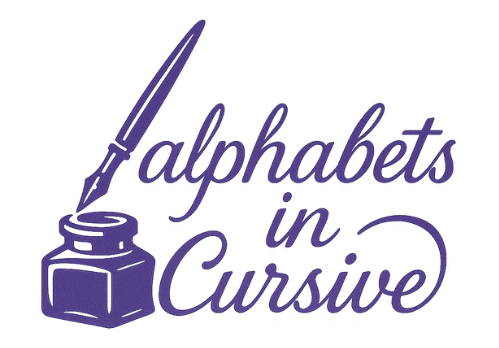Cursive Alphabets A to Z – Learn & Practice with Free Worksheets.
Introduction to Cursive Writing
Cursive writing is a style where letters are connected in a flowing manner, enhancing speed and elegance. It’s widely used for its practicality in writing quickly and beautifully.
Historical and Cultural Context of Cursive
Cursive evolved from ancient scripts for faster writing. Variations differ globally, reflecting distinct cultural identities and historical developments.
Cognitive and Developmental Benefits of Cursive Writing
Writing cursively improves fine motor skills, enhances coordination between the brain and hand, boosts memory retention, and supports spelling and reading skills development.
Essential Tools and Materials for Cursive Writing
Choose comfortable pens or pencils designed for smooth writing, quality paper that prevents ink bleed, and digital apps that offer practice exercises and worksheets.
Fundamentals of Cursive Writing
Understand the basics of cursive writing, including how letters are formed and connected. This section covers essential techniques and clear demonstrations to help beginners confidently master lowercase and uppercase cursive letters.

Understanding Lowercase Letters
Lowercase cursive letters are grouped by similar stroke patterns for easier learning. Practice letters like “a,” “c,” and “e” together.
| Letter | Example |
|---|---|
| a | 𝒶 |
| c | 𝒸 |
| e | ℯ |

Mastering Uppercase Letters
Uppercase cursive letters typically start from the top and have distinct loops and curves.
| Letter | Example |
|---|---|
| A | 𝒜 |
| B | ℬ |
| C | 𝒞 |
Step-by-Step Guide to Connecting Letters
Letters connect smoothly by ending the first letter’s stroke at the starting point of the next. Avoid lifting your pen to maintain flow.
Example: write “cat” in cursive as “𝒸𝒶𝓉.”

Common Mistakes and Troubleshooting
Beginners often face spacing and inconsistent sizing. Regular practice of specific problematic letters and words can correct this.
Expert Tips and Best Practices
Experts recommend maintaining consistent rhythm, spacing, and regularly practicing letter groups. Using lined paper helps develop uniformity.
Practical and Creative Applications
Explore engaging and useful ways to incorporate cursive writing into your daily life and creative projects. This section provides practical examples and fun ideas to enhance your skills and creativity through regular practice and playful activities.
Daily Practice Integration
Incorporate cursive into journals, letters, and lists. Craft personalized gifts like handwritten notes or creative calligraphy projects.
Interactive and Gamified Learning Ideas
Engage younger learners with cursive writing games or creative exercises such as timed writing challenges or themed projects.
Digital Learning Integration
Leverage cursive generators to see perfect cursive samples. Apps like “Cursive Writing Wizard” or websites provide interactive learning experiences.
Personalized Style Development
Develop your unique cursive style through experimentation. Your signature can become a powerful personal brand reflecting your personality.
Comparative Analysis of Writing Styles
Cursive writing offers speed compared to print, elegance compared to modern script, and simplicity compared to calligraphy. Choose cursive for personal letters and professional elegance.
WorkSheet

Alphabet Breakdown A-Z
Detailed guidance for each letter:
- Lowercase example (letter “f”): 𝒻
- Uppercase example (letter “F”): ℱ
- Connection example: “𝒻𝓊𝓃”
- Common mistake: Overly tall loops. Solution: Use guide lines for uniform loops.
| Letter | Lowercase | Uppercase | Connection Example |
|---|---|---|---|
| G | ℊ | 𝒢 | ℊ𝑜 |
| H | 𝒽 | ℋ | 𝒽𝑜 |
Conclusion
Cursive handwriting enhances cognitive skills and personal expression. Continuous practice ensures skill improvement and a lasting, elegant handwriting style. Keep practicing regularly for sustained proficiency and enjoyment.
